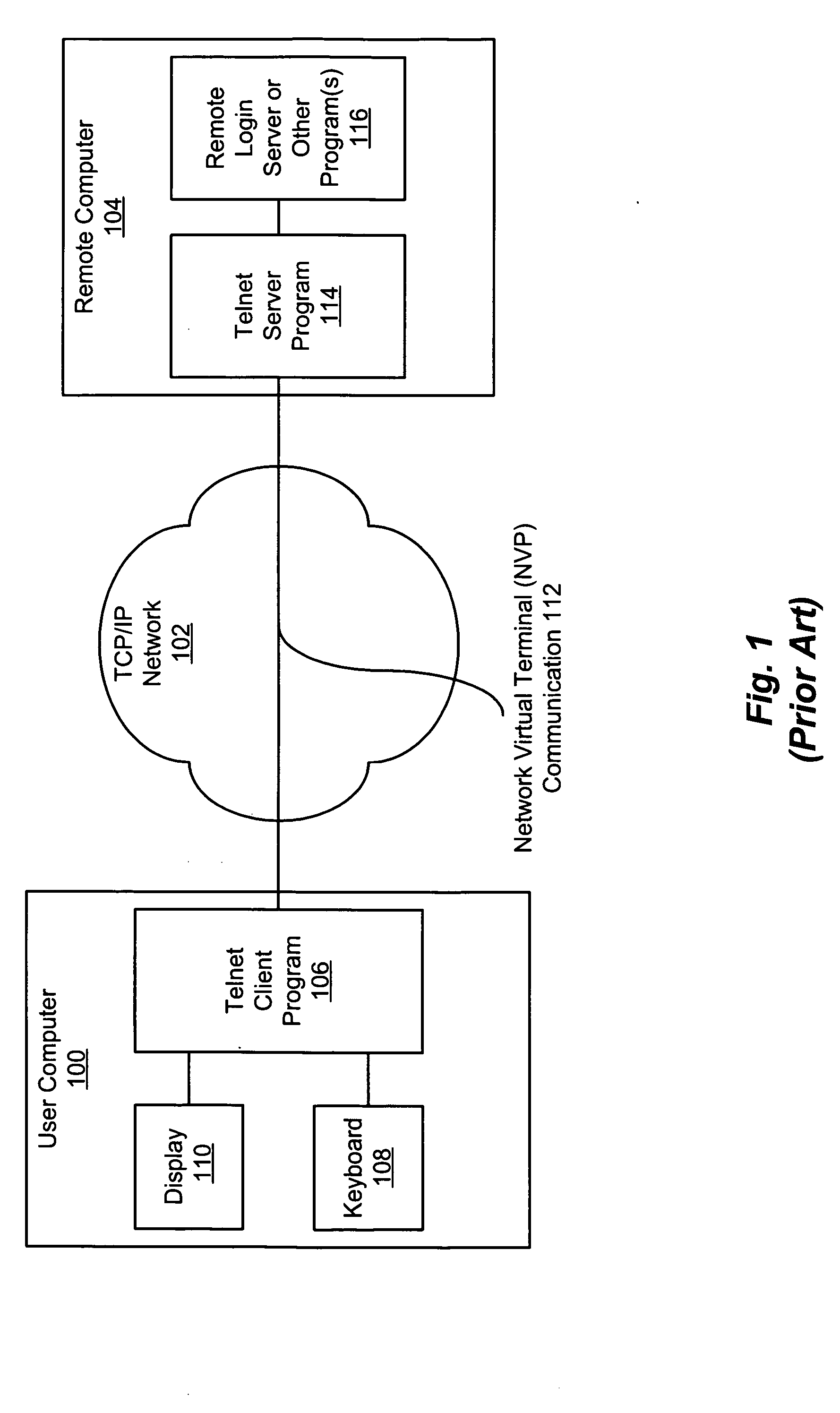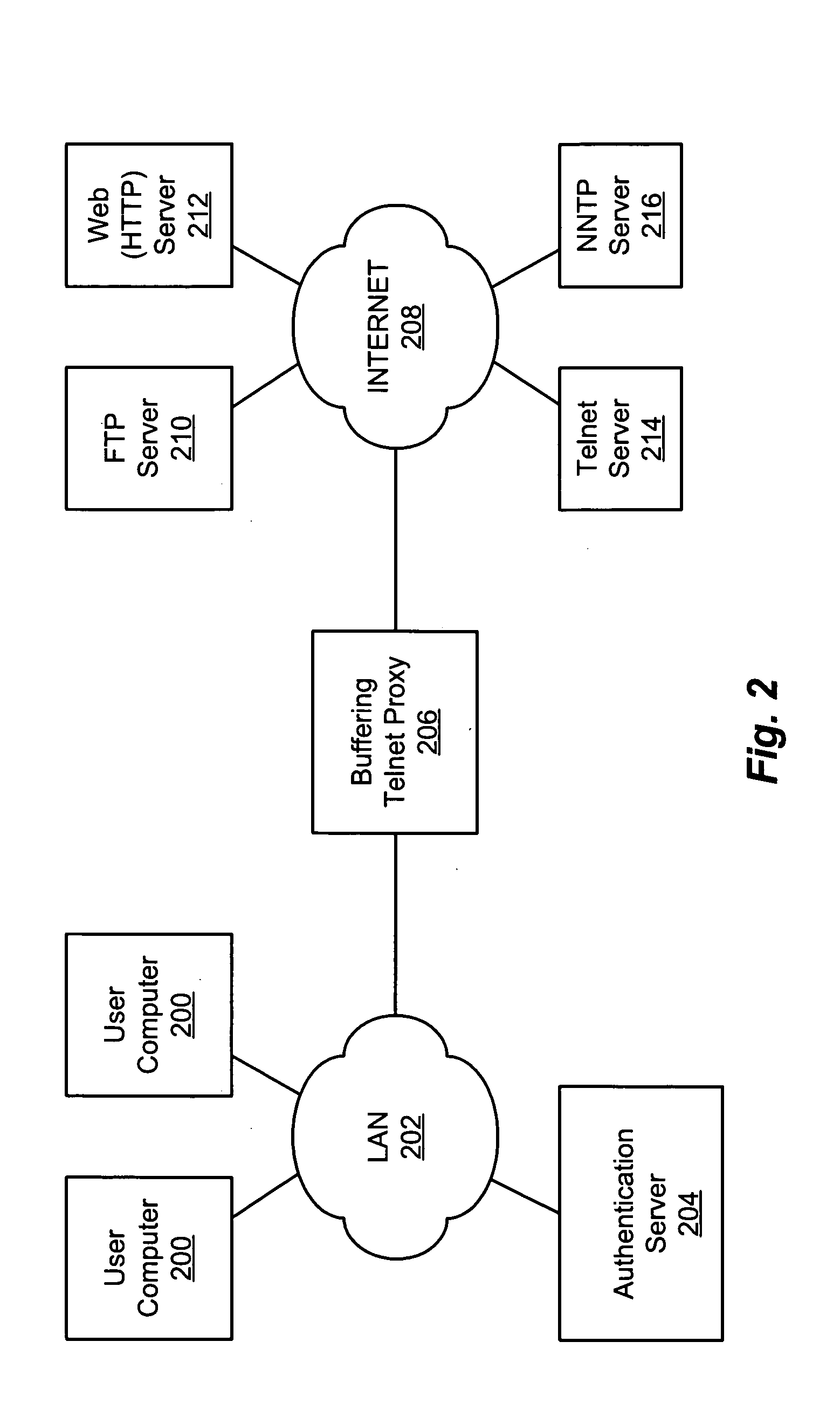Buffering proxy for telnet access
a buffering proxy and telnet access technology, applied in the field of telnet proxy, can solve the problems of reducing the productive portion of the user's session
- Summary
- Abstract
- Description
- Claims
- Application Information
AI Technical Summary
Problems solved by technology
Method used
Image
Examples
Embodiment Construction
[0026] In accordance with the present invention, a method and apparatus is disclosed for buffering option negotiation commands until after a Telnet connection is established between a client and a host. Before discussing the inventive buffering proxy, a brief overview of Telnet option negotiations is provided.
Telnet Option Negotiation
[0027]FIG. 1 is a block diagram of a conventional Telnet connection between a user computer 100 and a remote computer 104 via a network 102. The user computer 100 executes a Telnet client program 106, which simulates a terminal (not shown) to a user. The Telnet client program 106 accepts inputs from the user, such as through a keyboard 108, and displays outputs to the user, such as through a display 110. The Telnet client program 106 communicates, according to the Network Virtual Terminal (NVP) 112 Telnet standard, with a Telnet server program 114 in the remote computer 104.
[0028] The Telnet server program 114 provides the user inputs to a remote log...
PUM
 Login to View More
Login to View More Abstract
Description
Claims
Application Information
 Login to View More
Login to View More - R&D
- Intellectual Property
- Life Sciences
- Materials
- Tech Scout
- Unparalleled Data Quality
- Higher Quality Content
- 60% Fewer Hallucinations
Browse by: Latest US Patents, China's latest patents, Technical Efficacy Thesaurus, Application Domain, Technology Topic, Popular Technical Reports.
© 2025 PatSnap. All rights reserved.Legal|Privacy policy|Modern Slavery Act Transparency Statement|Sitemap|About US| Contact US: help@patsnap.com



